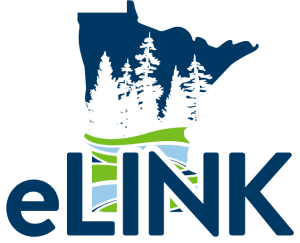Purpose: This guidance is meant to assist grantees in selecting the appropriate Activity Category when setting up a workplan or completing reporting.
Activity Categories are used to filter activity details in the system and create reports where listing of individual activities is not necessary or appropriate outside the system. The eLINK data collected under this model allows BWSR to determine, for instance, how many storm water retention basins were installed in 2014 for agricultural purposes (as opposed to those installed for urban storm water purposes). Note that not all categories are eligible activities for all grants. If you will be completing on-the-ground practices as part of your grant, reference the Chart of Practices by Activity Category to ensure that the practice is available under the Activity Category you’ve selected.
| Category | Description |
|---|---|
| Administration/Coordination | For grants where specifically allowed, category reflects staff time for local grant administration and reporting. Category may also reflect costs of facilities/operations if not included in a billing rate or indirect cost allocation. |
| Agricultural Practices | For establishment of engineered and/or ecological practices primarily associated with agriculture, notwithstanding practices associated with conservation drainage or practices specifically covered in another category. Includes basins and ponds constructed to collect and store debris or sediment and detain water, terraces, stripcropping, diversions, grade stabilization, filter strips, stream crossing etc. |
| Conservation Drainage | For constructed practices. The process of managing water discharges from surface and/or subsurface agricultural drainage systems. |
Education/Information
| For grants where specifically allowed, category reflects development and implementation of environmental education activities and programs such as workshops, clinics, publications, websites, presentations, fairs, etc. This category may reflect training and related information provided to or by Technical Service Area members and partners. |
| Forestry Practices | For constructed practices. Establishment or improvement of long-term forestry practices to improve or protect water quality, control soil erosion or stream crossing. |
| Groundwater | For constructed practices. The sealing and permanent closure of a water well no longer in use. |
| Inventory/Mapping | For grants where specifically allowed, category reflects inventories and mapping of water-related data such as wetland, potential contaminant sources, subsurface sewage treatment systems, drainage systems, and feedlot registrations, as well as keeping these inventories and maps up-to-date. This category should also be used to report on the development of new LiDAR-derived data products, e.g. hydromodified DEMs, flow networks, contours, etc. |
| Livestock Waste Management | For constructed practices. The application of practices to improve water quality associated with feedlots and livestock wastewater and runoff. |
Monitoring/Data Collection
| For grants where specifically allowed (generally Natural Resources Block Grant), category reflects surface and groundwater monitoring and data collection activities, including database updates. |
| Non-Structural Management Practices | Use for activities or practices that are not planning and are non-structural in nature. Examples include street sweeping; nutrient management; prescribed grazing; phytase feed; and source reduction of chloride such as equipment upgrades, pre-wetting, chloride storage and maintenance. |
| Planning and Assessment | For grants where specifically allowed, category reflects development of specific plans or special studies, such as nutrient management plans, farm planning/ certification, LIDAR analysis, subwatershed assessment, and feedlot inspection and compliance plans. |
Project Development
| For grants where specifically allowed, category reflects project support activities which will directly support or supplement the goals and outcomes of the work plan such as: civic engagement; public outreach; initial contacts, actions, and activities with landowners and/or partners; preliminary information gathering, conservation marketing, or other activities. |
| Regulations/Ordinances/ Enforcement | For grants where specifically allowed, category reflects development, writing, adoption, and implementation of regulations and/or ordinances. |
| Streambank or Shoreland Protection | For constructed practices. Using vegetation or structures to stabilize and protect banks and beds of streams, lakes, estuaries, or excavated channels against scour, erosion or stream crossing. |
| Subsurface Sewage Treatment Systems | For constructed practices. Projects to improve or replace SSTS systems. |
Supplies/Equipment
| For grants where specifically allowed, category reflects acquisition of equipment, hardware, software, or supplies. |
| Technical/Engineering Assistance | For grants where specifically allowed, select category for activities associated with technical site assessment, surveys, preliminary analysis and design, final design, construction supervision, installation, inspection, and completion of projects. |
Urban Stormwater Practices
| For constructed practices primarily associated with development and redevelopment in urban areas and not specifically covered in another category. Includes structure(s) constructed to accept and treat stormwater runoff generally associated with urban areas or development. Examples include as biorention, biofiltration, tree trenches, permeable surfaces, amended soils specifically for stormwater management, water reuse, sediment basins, grade stabilization, diversions, etc. |
| Wetland Restoration/Creation | For constructed practices. The re-establishment wetland functions. |
| Wind Erosion | For constructed practices such as field windbreaks and shelterbelts. Linear plantings of single or multiple rows of trees or shrubs or sets of linear plantings. |
| Special Project | For projects that do not fit in the categories above, use only with prior approval from BWSR staff. |
If you have an eLINK question, please email elinksupport@state.mn.us or if you encounter an eLINK error message please submit an elinksupport ticket via the Support form in eLINK.

